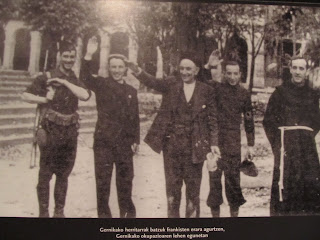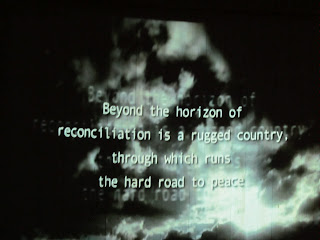On April 26, 1937, Francisco Franco did the unthinkable. He allowed Adolph Hitler to test out a new 'saturation bombing' strategy on the small market village of Guernica, Spain. Each Monday is market day in Spain, and this afternoon was no different.
Francisco Franco was the fascist authoritarian dictator during the Spanish Civil War from 1936-1939, and he was frustrated at the Basque province's unwillingness to succomb to Spanish National fascist rule and chose Guernica, its capital city, to suffer the consequences of their 'rebellion'. He allowed Hitler to practice his powerful new Luftwaffe aircraft on the village.
Starting late in afternoon, German warplanes started to appear over the horizon, and the carpet-bombing began. They first took out the majority of the bridges and road leading in (and out of) Guernica and relentlessly bombed the city for nearly 3 hours until sunset. Anyone who was caught running or trying to escape by foot was killed by machine gunfire. Since Guernica held absolutely no military significance in the civil war or in the upcoming Second World War, the understanding was Franco wanted to send a message to the non-conforming ( and unwilling to break and bend to Fascist Loyalist army) which included the Basques, unions and a small pittance of support from the US ( including Ernest Hemingway).
The final number of deaths is unknown, some say hundreds, some say thousands. Because of the fluid nature of a heavily refugee population, the exact number of people in Guernica that day was unknown. But the long-lasting effect was ever apparent. Francisco Franco, it is said, was propped up by Hitler for his willingness to sacrifice his own countrymen for the furtherance of
der Fuehrer's campaign. Even though he was able to keep his country out of World War II, the understanding by us was that it was because he sacrificed his own people for the Third Reich. While celebrating their supposed 'neutrality', there can be nothing neutral about Franco. He led in authoritarian and church-led rule for nearly 4 decades, and his legacy is one of protecting Spain from becoming a modern-day and truly free country.
The Peace Museum is a testament to what Guernica went through on that day. When you enter the museum it is split into 5 different rooms, the first being a room that is fitted out to be a replica of a common living room in 1937 Guernica. The door you enter is closed upon your entry and is deemed "Emergency Exit Only". There are no other doors in or out. After pacing the small room for a little bit wondering why one wall is mirrored and what is the point of being in the room anyway--- a woman's voice comes on the loudspeaker and she talks briefly about her daily life in Guernica in 1937. Going to Mass and the market, even though the local government officials had warned them not to go to market that day April 26th. Then the room goes dark and as you sit on a long wooden bench the bombing starts. The bench shakes and the lights flash, and the sound of explosions fills the room. It is short but powerful, and it closes with the sound of children screaming and then a mournful Basque song sung by one lone girl's voice. After the song, the lights come up on the mirrored wall and you see the replica of the room you are sitting in, after the bombing. The chairs are broken and the clock is stopped on a pile of rubble.
After that first exhibit, you are invited to tour the peace museum, which has an extensive (but small) inventory of German bombing materiel and shredded books and burnt timbers from the original bomb site. There is also remnants of German military clothing and preserved telegrams announcing news of the War ending.
Closing out the exhibit is a short video celebrating the message of forgiveness and peace that the city of Guernica now stands for internationally. The UN hosts peace summits and other world-renowned events to commemorate what happened to the Basques on that day and through their perserverance and pride of place how they survived.
I did find it fascinating with all of the talk of peace and unity, there was little mention of the Muslim faith, and no mention of 9/11 on the video. I wonder if this video needs to be updated to reflect a world beyond Nelson Mandela and FW DeKlerk, and the Aboriginals and the Australians, and the Guatemalans...just a thought. Although the message is still a powerful one, the world has not been listening....
 |
| Remains of the original church prior to 1937. Both sides of the cathedral were destroyed only to be replaced by an awkward apartment complex. |
 |
| Room number one |
 |
| post-bomb detritus |
 |
| Spanish political propaganda |
 |
| remnants |
 |
| leaving their home |
 |
| Guernica |
 |
| Pablo Picasso's artwork 'Guernica'...he was invited to prepare a piece of artwork to commemorate the World Fair in Paris in 1937. After he heard the news out of Guernica, he changed his original plan and chose to create this epic piece that demonstrates the violence chaos and disintegration his fellow Spaniards must of felt that day. It caused quite an uproar at the fair, and is considered one of his most powerful pieces. |
 |
| Picasso was so disgusted by the actions of Franco that he refused to ever set foot in Spain again while Franco was in power, and he did not. Franco outlived Picasso. |


























No comments:
Post a Comment